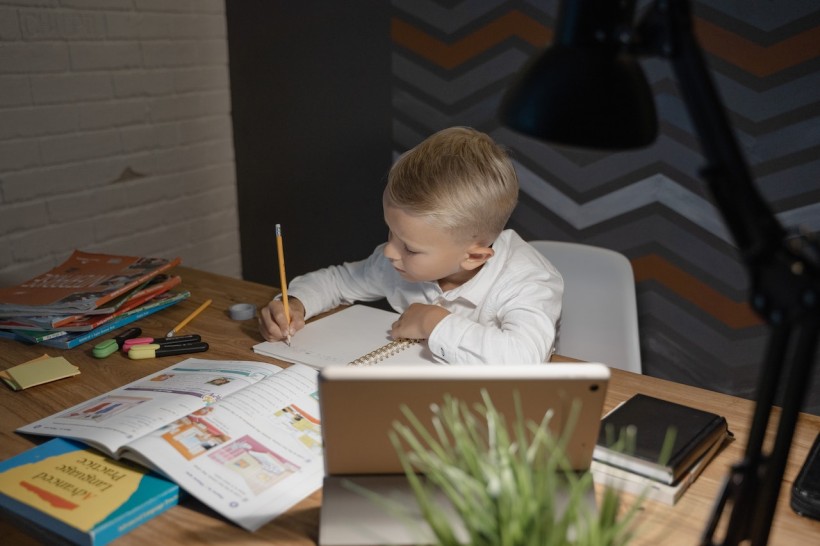The rapid adoption of technology has dramatically impacted almost every aspect of our daily lives, including how we learn. For example, new technologies used in the classroom have increased screen time in academic processes: textbooks have been exchanged for Chrome books, and at-home Wi-Fi access has been added to students' back-to-school supplies list.
However, parents have grown concerned about how much screen time kids are getting due to the rapid adjustment to virtual learning during the pandemic. Many children spend hours behind the computer at school and are glued to smartphones or tablets during their downtime at home. Paulette Chaffee, an experienced educator and children's advocate, understands parents' concerns regarding this subject. Below she shares suggestions on balancing screen time with receiving a quality education.
1. Choose pen and paper
Though using pen or pencil and paper is seen as an "old-school" approach to learning in the age of technology, writing things out helps decrease the time students spend staring at a screen. Even during a virtual activity, using pencil and paper forces students to take their eyes off a computer screen and focus on something tangible rather than virtual, like a whiteboard. The Campaign for Commercial-Free Childhood pushes the importance of using paper-printed materials and handwritten work over other virtual engagement options that require eyes to be on the screen.
2. Go for quality, not quantity
Virtual learning requires teachers to approach a lesson differently than they might in person. Rather than reverting to the typical lecture, teachers can elevate the quality of education by increasing student engagement during virtual learning. Interactive games and discussions are more effective for virtual learning, making an hour behind the screen higher in quality. Quality screen time helps students connect better with the material, teachers, and peers.
3. Incorporate offline activities
Incorporating more offline activities into virtual education is a great avenue to reduce screen time. Reducing learning activities that require screen time aids in eliminating blue light exposure, which often helps relieve common side effects that students can feel after multiple hours behind a computer screen, such as fatigue. In addition, utilizing more offline activities that are creatively engaging for students can enhance students' overall experience with virtual learning.
4. Use auditory learning options
When trying to infuse alternative learning methods into a virtual classroom, auditory activities may help students engage with learning more through their ears than their eyes. For example, students can listen to podcasts or audiobooks and can read along with a printed book in hand. Teachers can also assign auditory learning activities that require students to listen through headphones to engage in learning while going on a walk outside.
5. Infuse hands-on learning
Experts say project-based and hands-on learning are incredibly beneficial to add to virtual lesson plans. For example, students can be asked to explore learning through nature or hands-on activities like cooking or gardening. A great way to keep students engaged with hands-on learning is to allow choice in the process, such as listing out several options students can choose from for their hands-on activity.
6. Leave screen time for learning
Many students experience an overload in screen time due to their out-of-school activities revolving around screen exposure, such as gaming or watching television. Parents can help balance necessary screen time by limiting free-time activities that involve a screen.
About Paulette Chaffee
Paulette Chaffee is an educator, children's advocate, grants facilitator, lawyer, and member of various non-profit boards. She obtained bachelor's and master's degrees from the University of Redlands in Communicative Disorders and a California Lifetime Teaching Credential. She is currently the Ambassador for Orange County 4th District and a board member of All the Arts for All the Kids.
© 2024 NatureWorldNews.com All rights reserved. Do not reproduce without permission.
* This is a contributed article and this content does not necessarily represent the views of natureworldnews.com




![Climate Change is Reducing Dust Levels Worldwide as Arctic Temperature Warms [Study]](https://1471793142.rsc.cdn77.org/data/thumbs/full/70320/280/157/50/40/climate-change-is-reducing-dust-levels-worldwide-as-arctic-temperature-warms-study.jpg)

